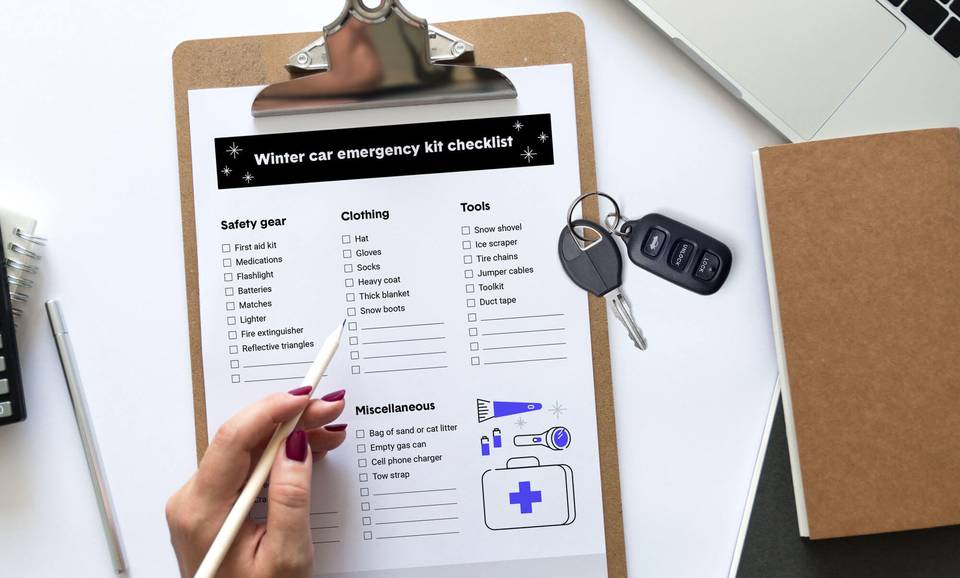6 Winter driving tips to remember for the next winter storm
Driving is dangerous in the best of times, but snow and ice up the stakes. Don’t let winter driving hacks or lazy habits increase your risk of injury, theft, or getting a ticket. Be cautious and patient and power through ‘til spring!
1. Don’t idle your car first before driving it
The best thing to do to warm your car quickly during cold temperatures is to get in and drive. Most parts of modern engines can’t warm up just by idling.
Why does the idling myth persist? The idea dates back to the 1980s and 90s when carburetors (a formerly essential engine element that is no longer widely used) were the norm. Carburetors did need to be adequately warmed before driving in order to get the right mix of air and fuel into the engine. But now, electronic fuel injection, which relies on sensors to find the right mix of air and fuel, has replaced carburetors and warm-up idling is now irrelevant for both optimal engine performance and passenger cabin comfort. The only thing you’ll do by idling is waste gas and cause more pollution. Revving your engine to warm it up isn’t a good idea either because you risk damaging the engine.
2. Never pour boiling water on the windshield
You could actually break the windshield if you do. Glass cannot go from freezing to high temperatures quickly. If it does, it could shatter. And while you’re at it, don’t pour boiling water anywhere else on your car, either – you could shatter side windows or damage in-door electronic systems. During the winter months especially, if your windshield has even a small crack, have it repaired immediately as windshields are crucial to vehicle structural integrity. Luckily, many companies will replace your windshield right in your driveway (and many insurers will pay for it, too).
If you must drive before you’re able to get a cracked windshield repaired, do not blast the heat inside your car if the temperatures outside are low. A crack in glass could spread much more quickly with a sudden temperature contrast.
3. What to do—and NOT do—when you hydroplane or hit black ice
Hydroplaning occurs when your tires encounter more water than they can scatter so they lose direct contact with the road and your car skids or slides. You’re most likely to hydroplane during the first 10 minutes of rain or snow as oils and grease on the road mix with water and create extra slippery conditions. Still, hydroplaning can happen on wet roads at any point, so use caution. In cold weather conditions, you’re also at risk of hitting a patch of black ice, a transparent (read: invisible) coating of ice that forms during rainfall with temperatures at or below 32 degrees Fahrenheit.
Both experiences can be dangerous, but if you prepare ahead, you can avoid acting out of fear and instead take steps to continue safely on down the road:
- Don’t accelerate or brake quickly because hydroplaning means you’ve lost traction with the road, and sudden changes in speed could cause you could spin out.
- If you have front-wheel drive (with or without ABS and traction control) or rear-wheel drive with ABS and traction control, look for open space and plan to travel in that direction.
- Accelerate just a little and steer gently – without sudden movements – in the direction of the open space.
- If you have a rear-wheel drive without ABS or traction control, you should still head toward an open space, but instead of applying pressure to the accelerator, ease off it as you steer to the open space.
4. A tire chain primer for winter weather driving
Tire chains aren’t for the everyday urban or suburban driver. Not only are chains difficult to attach, but they’re also like driving on a car with square tires. That is, chains make for an incredibly uncomfortable ride. Plus, they must be removed once you find a clear stretch of road. In fact, the only people who probably need tire chains are those living in rural (read: unplowed) areas with several inches of snowfall or during extreme blizzard conditions. For those in other regions, consider keeping an extra shovel and some kitty litter in your car to help you steer out of snowy spots instead.
5. Never snow on your car or ice on your windshield
You’re in a hurry and you just want to get going. But no matter how rushed your morning has been, don’t forget to stop and wipe or shovel the snow off the top of your car before you start driving. Why? For one, a number of states have laws against driving with snow still on your car.
Further, the snow on the roof of your car could easily slide and block your windshield when you break. Or, if it flies off onto the car behind you, it can hurt their visibility or risk them getting into an accident. Some drivers have even been killed because of stray snow and ice from the top of a car.
6. Don't use fog lights when there’s no fog
Some vehicles have fog lights installed in addition to headlights, which are useful for seeing more clearly on foggy days (as the name makes clear). But using them in clear weather can be blinding to other cars on the road. Some states, therefore, have laws banning their use whenever it’s not foggy out. If it’s dark or rainy, stick to using your usual headlights (not your brights!) and save the fog lights for actual fog.







